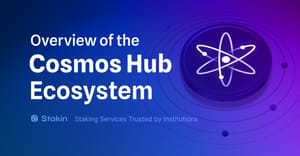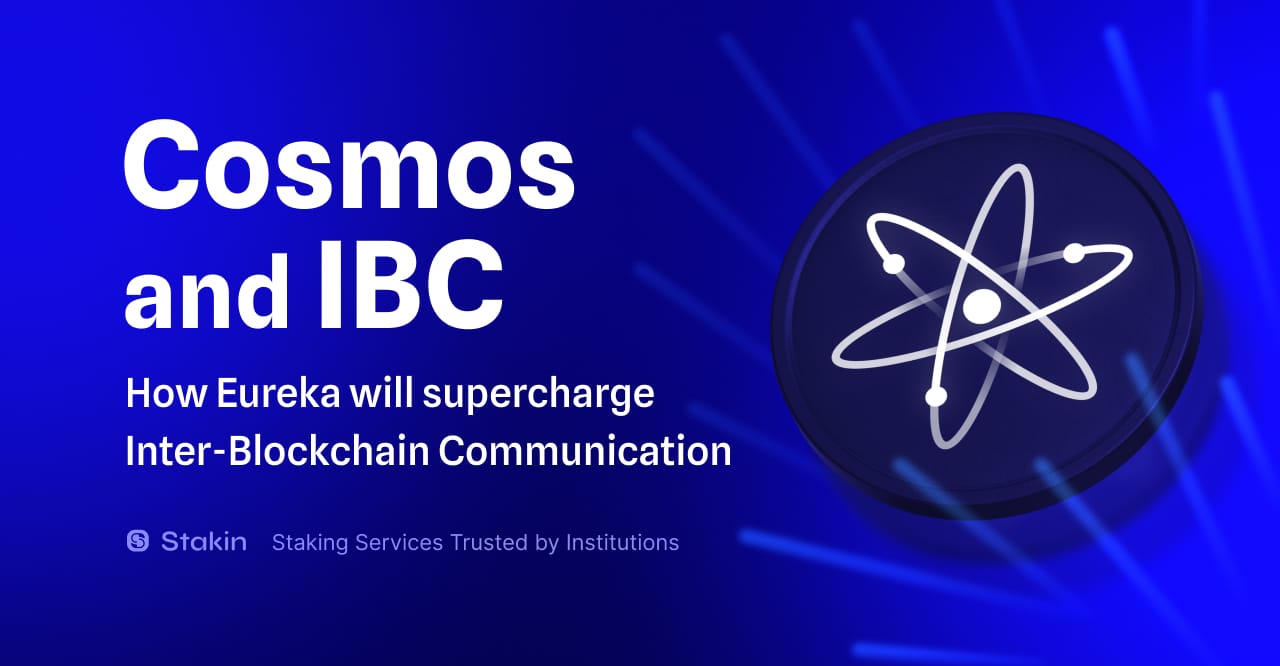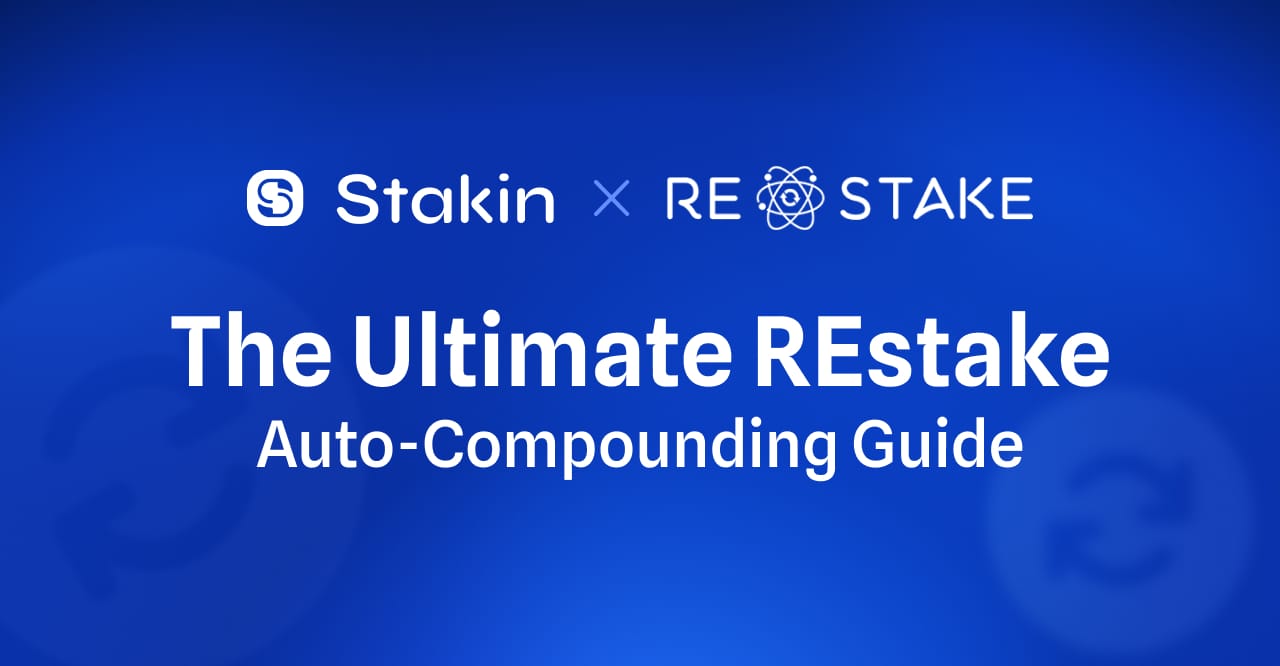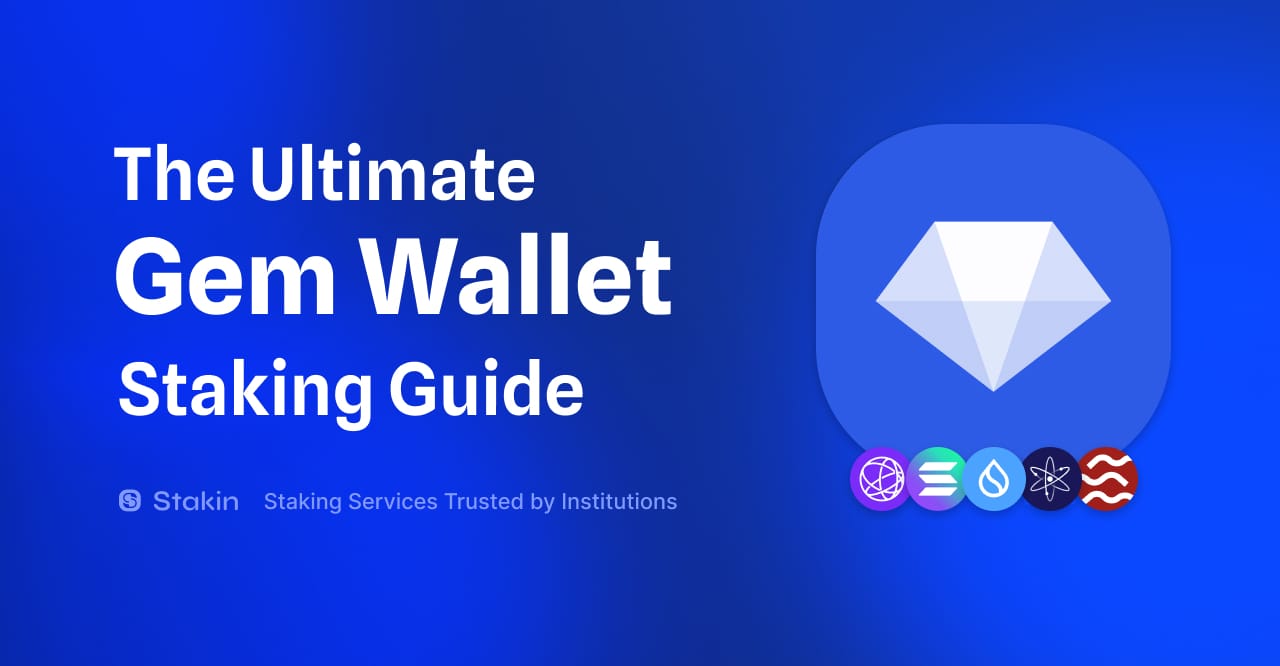Cosmos, or the Internet of blockchains is an inter-chain ecosystem of tools for constructing interoperable application-specific chains. Its main components are the SDK (Cosmos Software Development Kit), Tendermint, the IBC (Inter-Blockchain Communication protocol), and the Cosmos Hub.
All blockchains built on Tendermint and the Cosmos tech stack can communicate and exchange assets and data thanks to the IBC. The Cosmos Hub is the main Cosmos blockchain, and other Cosmos SDK blockchains can communicate with it through IBC, which serves as the main economic center among the IBC-connected chains.
The Cosmos ecosystem is massive. The combined market cap across 90+ independent blockchains using the Internet chain stack is $115 billion, while the combined market cap of IBC-enabled chains is around $23 billion.
Cosmos Ecosystem core components
Before we move on further, let’s explain Cosmos’ core infrastructure components, which we already highlighted above:
CometBFT is a state machine replication engine for secure, reliable, large-scale, application-specific blockchains. In plain terms, CometBTF is software for consistently and securely replicating an application on multiple machines.
The Cosmos SDK is a generalized framework comprising various robust tools for building projects on Cosmos. The Cosmos SDK, therefore, makes building Cosmos dApps more intuitive.
The Inter-Blockchain Communication Protocol (IBC) allows blockchains in the Cosmos ecosystem to connect and transfer tokens and data in a frictionless and seamless manner.
The Cosmos Hub at a glance
The Cosmos Hub has been the first Cosmos blockchain. Cosmos Hub was launched in 2019, relying on technologies built by the Interchain Foundation and Tendermint.
Cosmos Hub holds a unique place within the Cosmos ecosystem because it serves as the primary hub in the network where each new zone, or decentralized blockchain application, is linked. Cosmos Hub is a Proof-of-Stake (PoS) sovereign blockchain with an account-based accounting model and no native smart contract functionality.
Cosmos Hub also provides several vital services for the Cosmos ecosystem. For start, Cosmos Hub serves as a DEX for swapping cryptocurrencies with low fees and instantaneous transaction confirmations.
Cosmos Hub also establishes IBC connections between chains and operates bridges with networks like Ethereum and Binance, effectively serving as a network router.
Finally, the Cosmos Hub is highly secure, making it the best place to hold digital assets and manage accounts across several chains.
ATOM is the native token of the Cosmos Hub blockchain used for trading, staking, and governance. By staking ATOM, stakers earn inflationary rewards and tokens of chains secured through interchain security, such as Neutron.
Daily Active users on Cosmos Hub have maintained a steady level, with a mild but continuous increase over the past six months:
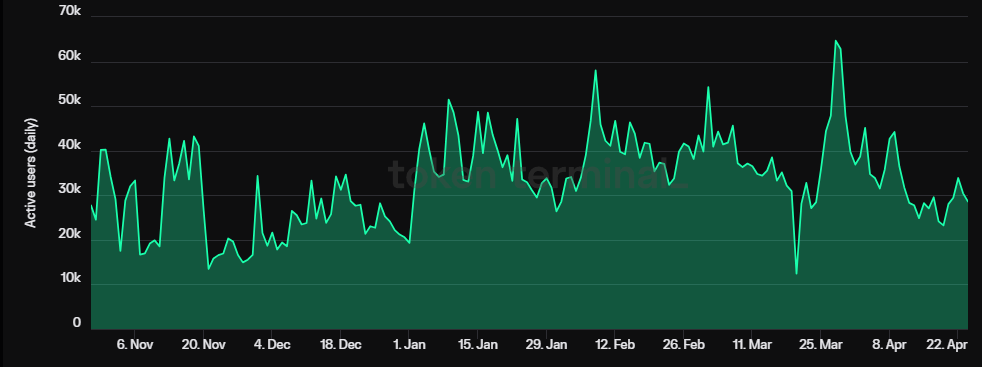
The Inter-Blockchain Communications Protocol (IBC)
The IBC is the protocol that essentially enables various Cosmos blockchains to communicate with each other. Cosmos Hub has 67 IBC so-called peers and 471 so-called IBC channels (as of April 29).
“Peers” refers to the number of distinct counterparties of Cosmos Hub with established IBC connectors; “channels” refers to the total number of routes available to connect to peers.
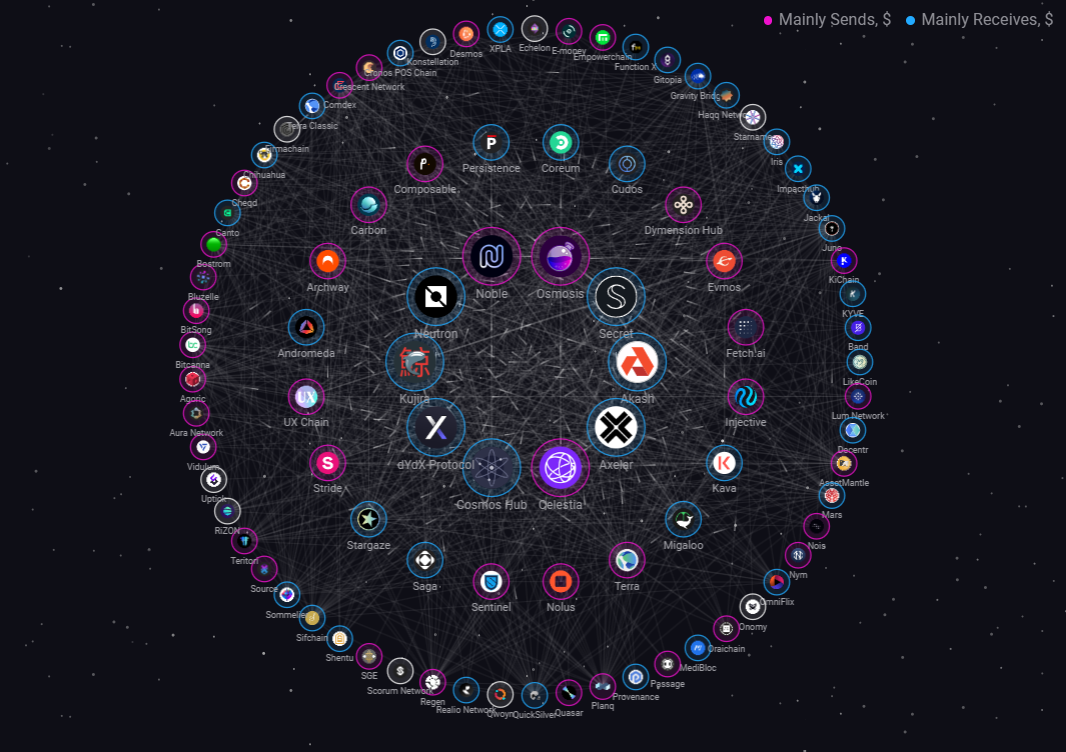
The Atom Economic Zone (AEZ)
The Atom Economic Zone (AEZ) is an ATOM-aligned ecosystem set, which includes networks with different affiliations and integrations with the ATOM token. The most important networks within the AEZ are Neutron, Stride And Osmosis. Let’s explore each of these.
Neutron
If Cosmos Hub is the most secure blockchain within the Cosmos ecosystem, Neutron is the most secure smart contract platform on the interchain.
Neutron is secured by the Cosmos Hub through Interchain Security (an open-sourced IBC application that allows cosmos blockchains to lease their proof-of-stake security to one another). Neutron was born as a result of Proposal 792, which saw Neutron become the first chain to leverage the Cosmos Hub’s validator set and security through Replicated Security and is the first consumer chain on Cosmos Hub, making it Cosmos Hub’s default DeFi platform.
Neutron’s infrastructure empowers applications to scale efficiently across many chains. This lets them tap into the liquidity and activity of remote chains and improve their distribution in other ecosystems. Instead of relying on trusted multi-sigs, applications on Neutron can register accounts, deploy smart contracts, and manage portfolios remotely.
Osmosis
Osmosis is the most popular DEX in the Cosmos Ecosystem, and usually the first chain Cosmos chains connect to via IBC, making it another liquidity hub of sorts. Osmosis retains its status as the one-stop shop for the purchase/sale of IBC assets by providing lucrative liquidity mining incentives to its liquidity providers.
Osmosis’s TVL currently stands at $177 million (as of April 25), with a steady uptrend since October 2023.
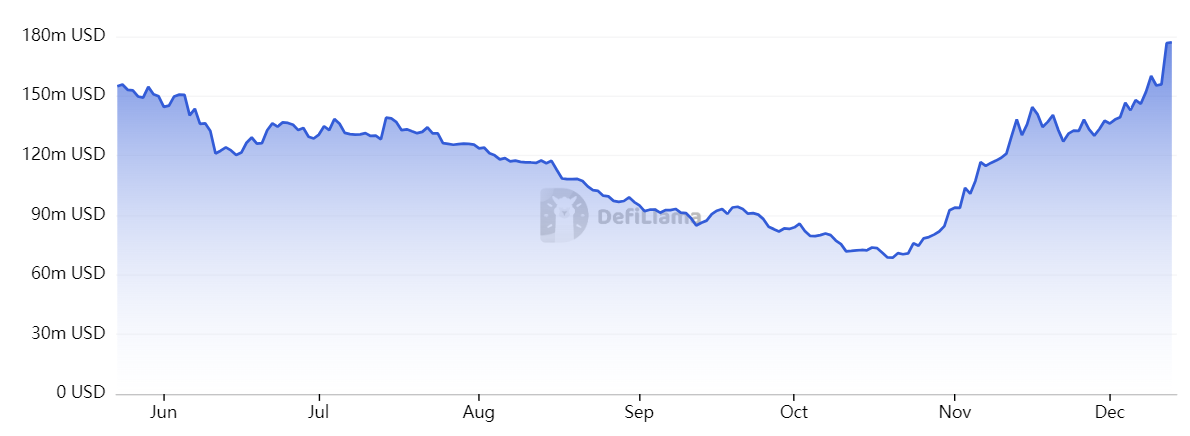
Stride
Stride is a liquid staking zone that allows users to easily stake their favorite Cosmos-native assets like ATOM to mint tokens, the staking derivatives issued by Stride.
Stride’s TVL currently stands at $150 million (as of April 25), with a notable uptrend reflecting a global macro surge of interest in liquid staking derivatives. ATOM makes up 80% of Stride’s TVL.

Stablecoins
For a while, stablecoins on Cosmos have been a silent domain, especially after the crash of TerraUSD, which was built on a Cosmos application-specific blockchain. The lack of liquid stablecoin options has been detrimental to the growth of financial activity in the Cosmos ecosystem, as stablecoins are vital to a thriving blockchain ecosystem.
Last July, Tether's USDT, launched on Cosmos via Kava. In September, a native stablecoin arrived in the Cosmos ecosystem, with Circle issuing USDC in partnership with Noble, an app chain purpose-built for native asset issuance on Cosmos.
This month, Frax Finance also announced its collaboration with Noble to expand Frax’s products into the Cosmos ecosystem. This expansion has provided Cosmos users with a solid decentralized alternative to USDC (on top of USK, another native decentralized stablecoin launched by Kujira). Noble allows for easy and secure transfers between app chains, removing the need for custodial bridging from other ecosystems.
You may also be interested in:
Frax’s offerings on Noble include the Frax token, a decentralized stablecoin that combines collateralized and algorithmic mechanisms for peg stability, and sFrax, a staked version of Frax, a yield-bearing asset. This means the Frax token (FRAX) and its staked version, sFRAX, will also be native to the Cosmos ecosystem via Noble.
Cosmos Hub and EigenLayer
Cosmos is a thriving and technologically very advanced ecosystem hungry for new users. EigenLayer would benefit the Cosmos ecosystem in two ways: by borrowing Ethereum’s ~$100 billion economic security, and by lowering the barriers for Layer 2 networks to utilize Cosmos innovations, thus bringing more users to the Cosmos ecosystem.
The former holds a massive potential for the Cosmos ecosystem. Inter-chain security (ICS) allowed chains to borrow economic security from the ATOM token and the Cosmos Hub validator set. Ethos, an EigenLayer AVS, follows the same shared security narrative of Cosmos. Ethos has been developed to bring re-staked ETH from EigenLayer into a new provider chain hub for the Cosmos ecosystem.
This means that Ethos acts as a central source of restaked ETH, from which Cosmos chains can borrow to bootstrap their trust layer using low-cost (inflation) assets instead of more volatile Cosmos-based assets.
Closing thoughts
Cosmos Hub began as an interoperability hub for the broader Cosmos ecosystem. However, it has slowly evolved towards becoming a security provider, with Neutron and Stride as the first chains to be secured by Cosmos Hub.
More importantly, decentralized stablecoins are back on Cosmos Hub, with Frax Finance bringing FRAX and sFRAX into the Cosmos and IBC ecosystems via the Noble application chain.
Are you ready to stake ATOM? It only takes a few steps to do so. Find out how on our Cosmos staking page.
